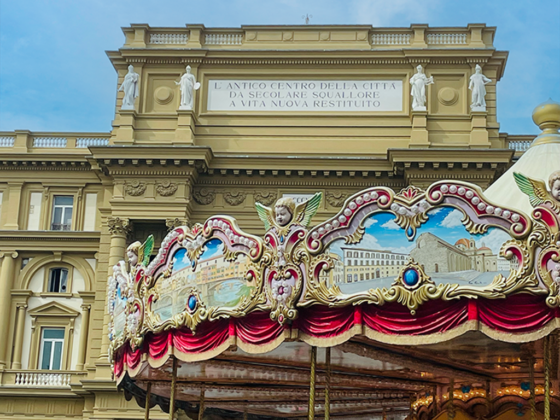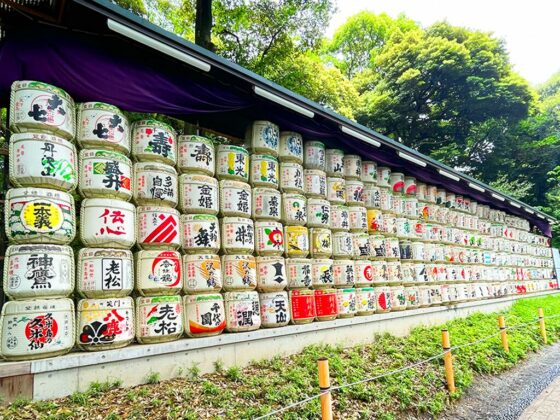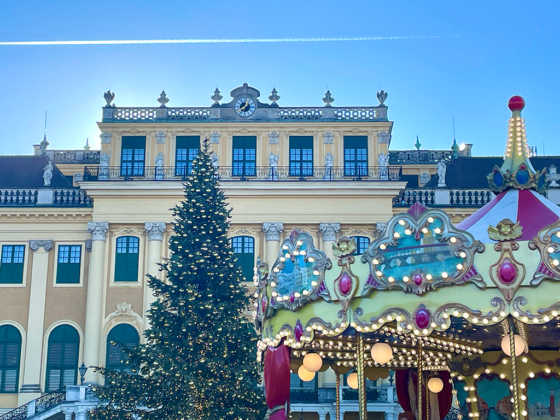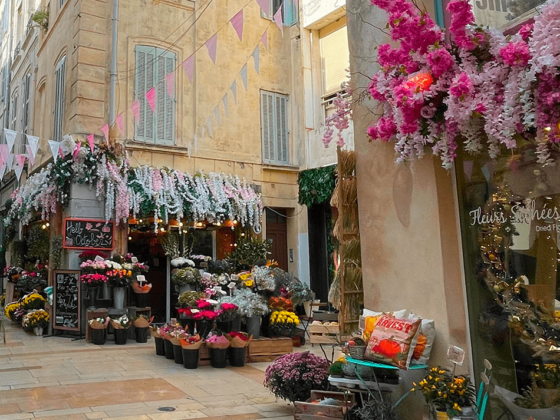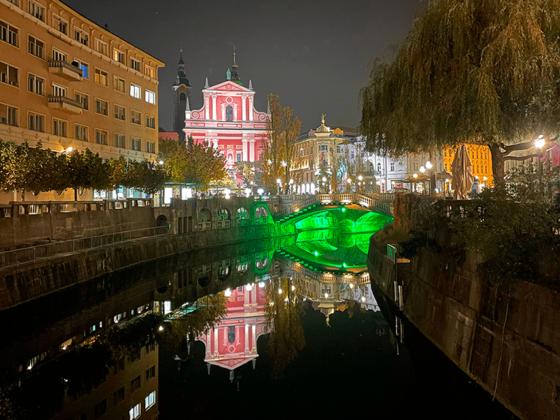When one speaks of Paris, one immediately thinks of the ROMANTIC City of Light, with its tree-lined boulevards and cosy cafés. But for me Paris has always been much more than just a ‘city of love’. I have always been fascinated by this city, and already through the paintings of the most famous artists I have dreamed of walking the same streets lit by the sun’s rays and catching the magic of the Parisian sky. Thanks to a work experience, I was lucky enough to ‘hang out’ there for about 4 months and it did not disappoint my expectations.
Looking at the Paris sky, one cannot help but think of the fascinating paintings of Monet and Renoir. The shades of blue and pink painted with light brushstrokes, the golden reflections on the clouds as if they were a palette of moving colours, all make the Parisian atmosphere an almost pictorial experience.
Then there are the roofs of Paris, like a scene from a Pissarro or Degas painting. Their harmonious lines stand out against the sky, creating a unique profile that blends past and present. Warm-toned tiles, chimneys that rise with an aura of history and skylights that open like windows to the past all contribute to a fascinating and timeless cityscape.
Together, the Paris sky and its rooftops seem to tell a story of light and colour, a story that has inspired and continues to inspire artists around the world.
This city goes far beyond the stereotypical images of lovers along the Seine: it is a harmony of sounds, colours and cultures that come together in a symphony of unforgettable experiences. Paris is the melody of an accordeon in the alleys of Montmartre, the brush painting the gardens of Versailles and the twinkling lights of the Eiffel Tower dancing in the dark.
A trip to Paris is not to be forgotten and I couldn’t wait to take Paolino there. Get ready to immerse yourself in the art, culture and magic of Paris. Bienvenue dans la Ville Lumière!
Map
TipsforTrips: To get around Paris we used the Paris Visite, a pass that allows unlimited travel on the Paris public transport network. The pass is valid for 1, 2, 3 or 5 consecutive days and is valid for zones 1-3 or 1-5 – Disneyland ® Paris (zone 5), The Castle of Versailles (zone 4), Charles de Gaulle (zone 5) and Orly (zone 4) airports -. Depending on the zones chosen, it allows you to travel on the metro lines, the RER lines (RATP and SNCF), the Île-de-France bus lines (RATP and OPTILE) except those of the Jetbus, Allobus Roissy CDG, tourist circuits and Air France shuttles, the Orlyval line (connecting Orly airport to the RER B) and the Montmartre funicular. The pass can be purchased online with a 7% surcharge – the original is sent to your home or directly to your hotel – or at ATMs at airports, metro stations and RER stations. The Paris Visite Pass is valid from the first day of use (and not from the day of purchase), a full day is counted, whatever time it is used.
Day 1: Marais, Latin Quarter
We begin our tour of Paris from the Marais. Midway between tradition and modernity, it mixes its Jewish roots and its gay-friendly vocation, becoming one of the most multicultural areas in Paris.
We start at the historic Place de la Bastille, symbol of revolution and change. Today, the square is bustling with cafés and trendy shops, but you can still breathe in the atmosphere of the past. In the centre of the square stands the July Column, Colonne de Juillet, erected in memory of the martyrs of the revolutions of 1830 and 1848, with Dumont’s gilded bronze statue of the Génie de la Liberté, Génie de la Liberté, at the top.
We wander through the district’s network of streets until we come to Place des Vosges, one of the most beautiful squares in Paris and the oldest. At its centre is a beautiful garden and surrounded by beautiful period buildings with arcades all around characterised by antique shops, art galleries and a few cafés.
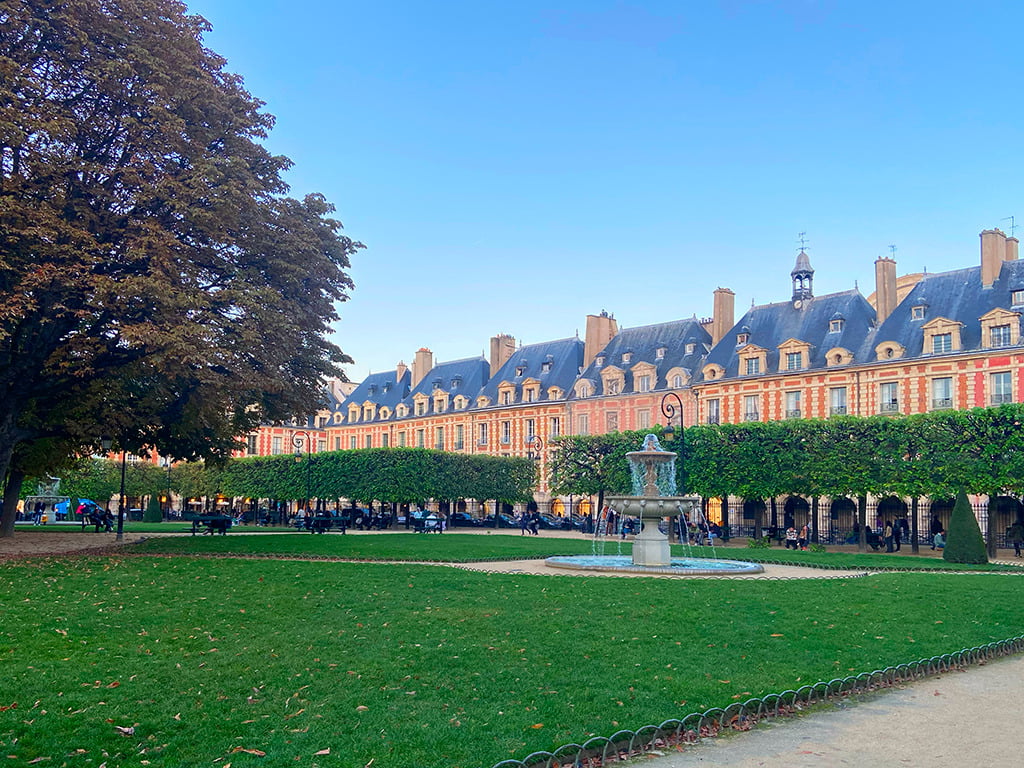
We cross Rue des Rosiers, one of the most picturesque streets in the Marais. In the 1960s, it underwent a major renovation that brought back all its charm and beauty, and the neighbourhood began to repopulate itself, creating a lively and culturally rich community. Here the contrast between tradition and modernity is evident: falafel ‘aces’ alternate with trendy cafés, kosher butcher shops with vintage shops. Walking down this street provides a unique sensory experience.
Confirming the distinctly cultural and modern character of this district is the majestic Centre Pompidou. Designed by the Italian Renzo Piano and the English Richard Rogers, it is a futuristic structure of great visual impact decidedly at odds with the historical urban context in which it is inserted. This immense building is entirely dedicated to modern and contemporary European art where the most famous works of Surrealism, Pop Art and Minimalism mingle with the masterpieces of Picasso and the works of Expressionism.

TipsforTrips: In the evening, as you climb to the top floor, you have a splendid view over the whole of Paris: the view stretches from the Eiffel Tower all the way up to the white Sacré-Cœur.
Right next door, the Igor Stravinsky Square adds yet another bit of eccentricity to the place. In the centre is the extravagant Fontaine des Automates, a beautiful fountain created in 1983 using original aluminium sculptures that move with the power of water jets. The contrasting shapes and colours of the fountain and the majesty of the surrounding buildings make it a colourful and bizarre place.
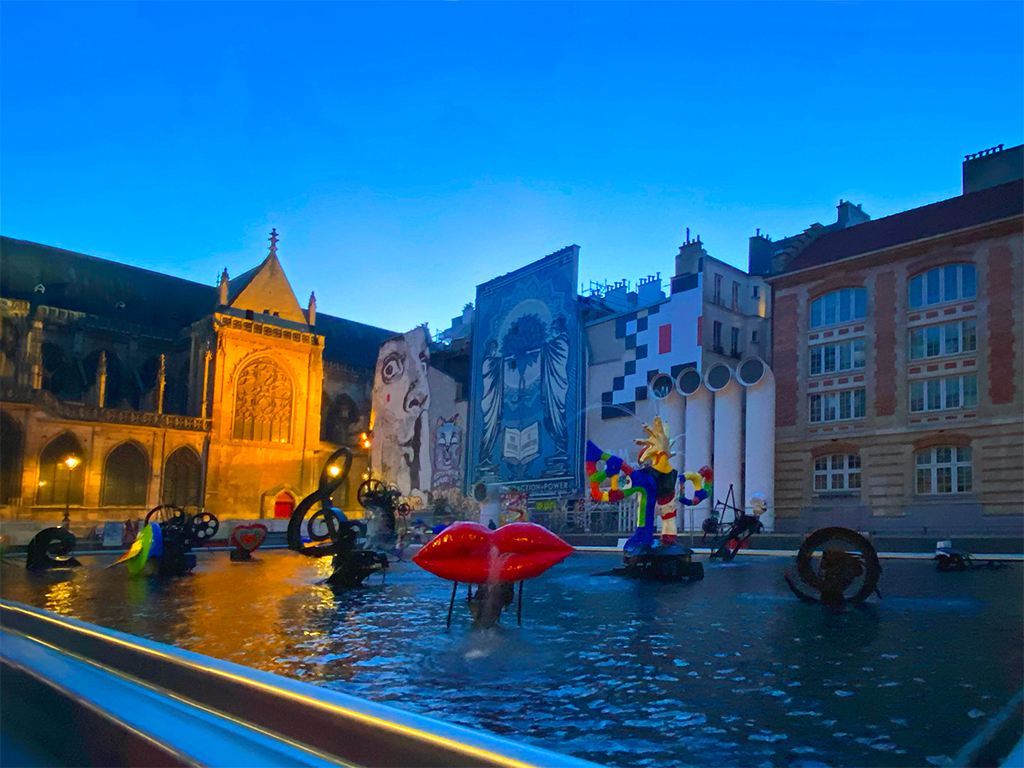
In the afternoon we move to the Latin Quarter, one of the most picturesque corners of Paris. Frequented mainly by students and literati, it mixes the vintage flavour of cinemas, cafés and jazz clubs with new trends from all over the world.
We start on the very famous Boulevard Saint-Michel characterised by the Fontaine Saint-Michel, an imposing bronze statue of Saint Michael. On the right, we walk along Rue de la Huchette, one of the oldest but most touristy and bustling streets on the Left Bank, dating back to 1200. In the evening, it comes alive with nightlife among taverns, bars, clubs and theatres.
We continue to Rue de la Bucheriea, specifically to number 37 to discover a little gem on the rive gauche: the Shakespeare and Company bookshop. The first bookshop was opened by Sylvia Beach in 1919 at 8 rue Dupuytren before being moved in 1921 to 12 rue de l’Odéon, where it remained until 1941, when it was closed due to the German occupation of Paris and never reopened. In the 1920s, it became a meeting place for writers such as Ezra Pound, Ernest Hemingway, James Joyce and Ford Madox Ford In 1951, another bookshop was opened by George Withman, in the current location, under the name Le Mistral and, on Sylvia Beach’s death in 1964, it was changed to ‘Shakespeare and Company’ in her honour. In the 1950s, the bookshop was the base for many of the Beat Generation writers such as Allen Ginsberg, Gregory Corso and William Burroughs. The bookshop serves as both a bookshop and a reading room. Inside you can still breathe in the spirit of all that was and all the ‘trumbleweed’ who passed through, a place of stories and ideals.
An unmissable stop is the Pantheon, a masterpiece of neoclassical architecture and one of the capital’s most emblematic monuments. Built as a Catholic church dedicated to Sainte-Geneviève during the French Revolution, the building was deprived of its religious functions and became a secular mausoleum for the ‘grands hommes de l’époque de la liberté française’. Today it houses the remains of such figures as Victor Hugo, Rousseau and Voltaire.
We don’t miss a relaxing break at the Jardin du Luxembourg, which surrounds the magnificent Luxembourg Palace of the same name. In addition to beautiful flower-lined avenues, the garden is rich in statues and monuments such as the famous Medici Fountain, the Statue of Liberty by Frédéric Bartholdi, the bust of Charles Baudelaire, the statue of Beethoven and the Observatory Fountain.
We end the day on Rue Mouffetard. This long, cobbled street is certainly one of the most authentic in Paris and has an ancient history: in Roman times it was the link between Paris and Rome. Here we stroll among boulangeries, fromagerie and wine shops, always crowded cafés, vinyl shops, bookshops and little vintage shops. The atmosphere welcomes and accommodates you pleasantly.
Day 2: Père-Lachaise Cemetery, Montmartre
We dedicate the entire morning to the Père-Lachaise Cemetery. Located in the 20th arrondissement of Paris, it is one of the largest cemeteries in Paris, but also one of the most famous in the world. Although when it was built – in 1804 – it was snubbed by Parisians who did not want to bury their loved ones far from the city, today it is instead the burial place of many famous people, artists, writers and musicians, making it a site steeped in history and culture.
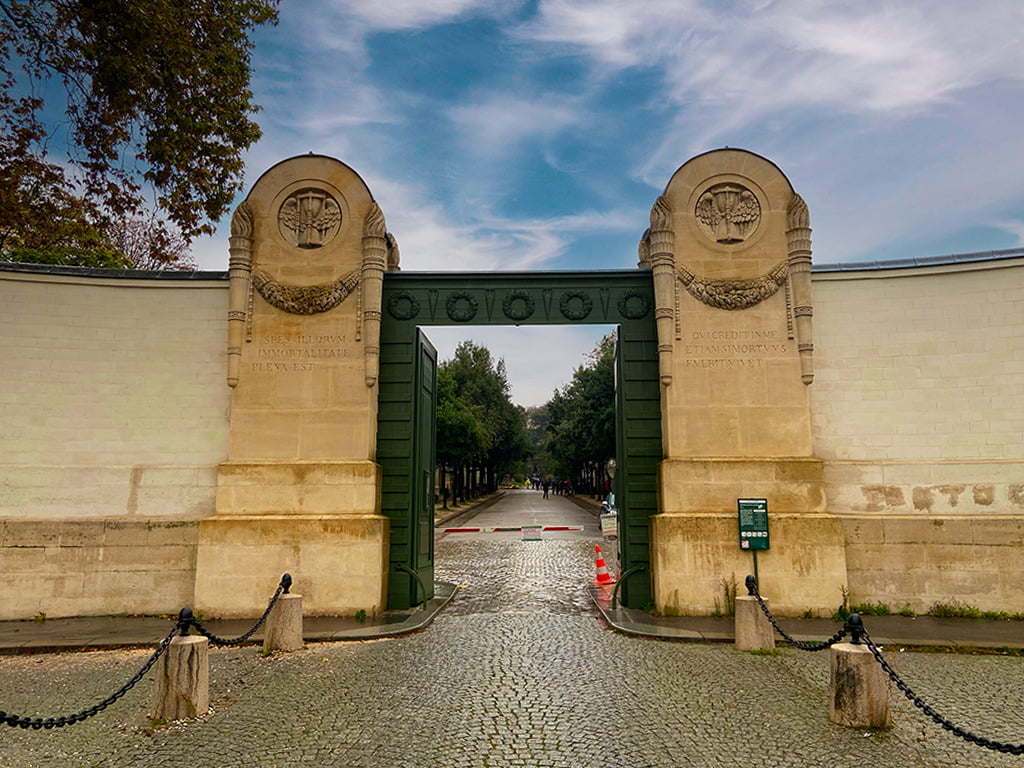
One of the most fascinating features of the Père-Lachaise is its unique sepulchral architecture that makes it a very atmospheric place to stroll around. It has an eclectic and evocative Gothic charm with its grandiose 19th-century sculptures, sinister-looking old trees, and imposing tombs and mausoleums covered in moss and vegetation, aspects that contribute to giving this place a decadent and mysterious atmosphere.
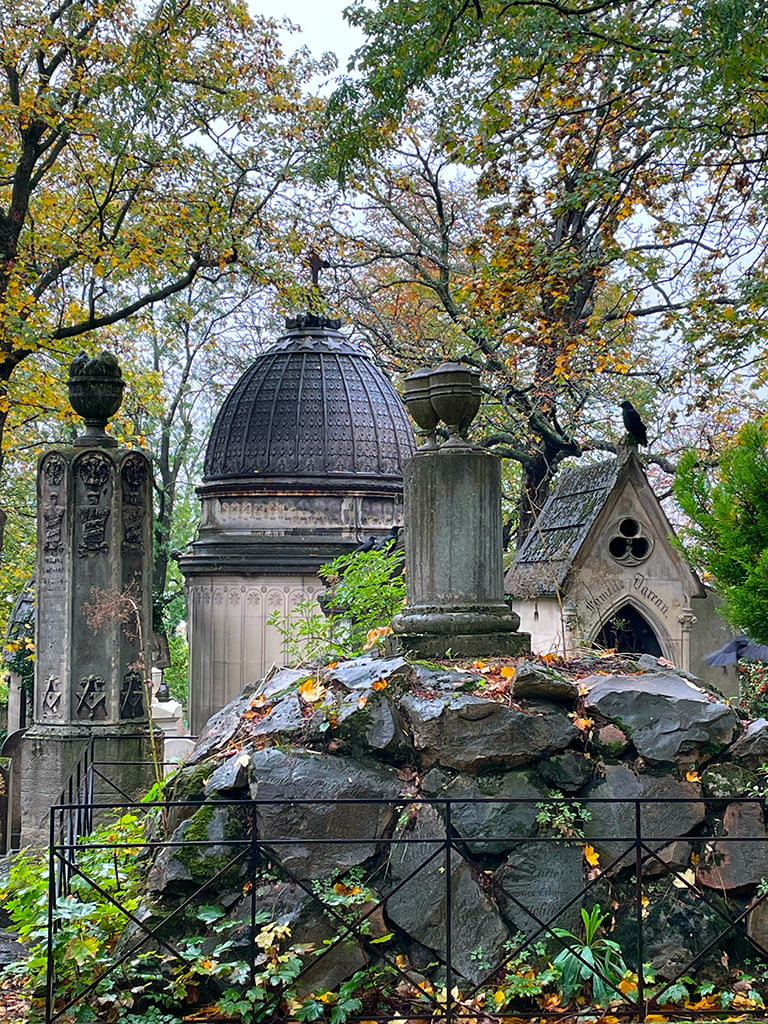
The Père Lachaise Cemetery is at the same time an immense 44-hectare garden to be explored, far and wide, through its 15 km of paths, in search of the most evocative tombs and the most beloved personalities. To fully enjoy the experience, I recommend planning your visit in a relaxed manner. Bringing a map of the cemetery can be helpful in locating graves of interest.
Here is a list of some of the most famous ones:
- Jim Morrison (1943-1971): Located in Division 6, Jim Morrison’s grave is undoubtedly one of the most visited. Characterised by a simple design, the tombstone is often decorated with fresh flowers, letters and objects left by his many admirers;
- Edith Piaf (1915-1963): The grave of the legendary French singer Edith Piaf is located in Division 97. Her tombstone is often surrounded by flowers, cards and often small souvenirs left by her passionate admirers;
- Oscar Wilde (1854-1900): Oscar Wilde’s grave in Division 89 is an impressive sight. The statue of the artist behind protective glass has been restored to preserve its beauty;
- Heloise (1101-1164) and Abélard (1079-1142): located in Division 7 of the cemetery, it features a sculpture representing the two lovers in eternal union. Their sarcophagi lie under an ornate Gothic structure, symbolising their tormented love affair;
- Honoré de Balzac (1799-1850): In Division 48, Balzac’s tomb is a monumental bronze structure depicting the writer seated with an open book on his lap. This monument is an evocative interpretation of Balzac’s life and work;
- Frédéric Chopin (1810-1849): The tomb of the famous Polish composer is located in Division 11. The monument, sculpted by Auguste Clésinger, depicts a winged figure weeping over Chopin’s grave;
- Maria Callas (1923-1977): In Division 87, the tomb of the famous soprano Maria Callas features a statue depicting her in a moment of musical expression.
In the afternoon we move on to Montmartre, the bohemian district of Paris – my favourite -, full of art, cobbled streets and picturesque views. Its vibrant atmosphere captivates anyone who visits it. Our visit to the heart of Montmatre starts at the foot of the Sacré-Coeur Basilica where the Carrousel de Saint-Pierre, a picturesque Venetian-style carousel, is located.
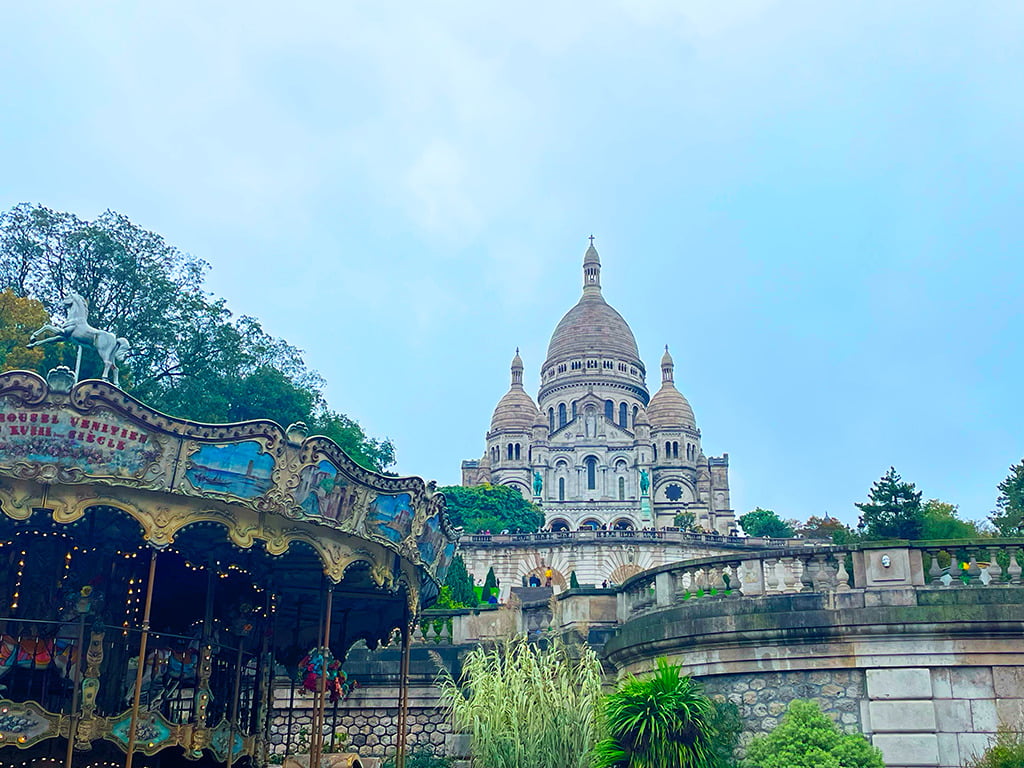
This is the starting point of Square Louise Michel, a lush park stretching along the side of the hill and allowing 237 steps to reach the top. The walk to the top passes through the lower and upper terraces of the steps, which provide wonderful views of Paris and from which the Eiffel Tower can also be seen. The park is filled with monumental trees and works of art such as Paul Gasq ‘ s Fountain and Emile Derrè’s Fountain of the Innocents.
We arrive at the Basilica of the Sacred Heart, symbol of Montmatre and iconic place in Paris. Designed by architect Paul Adabie in the Romanesque-Byzantine style, it towers over the rooftops of Paris with its 83-metre-high dome – it is the tallest building in Paris, after the Eiffel Tower. It is a rainy day and I discover that its silhouette of almost brilliant white is made even brighter by the rain. In fact, the stone used for its construction, the Chateau-Landon, in contact with rainwater releases calcine, a white substance that when it rains makes the Basilica glow, making it even whiter.
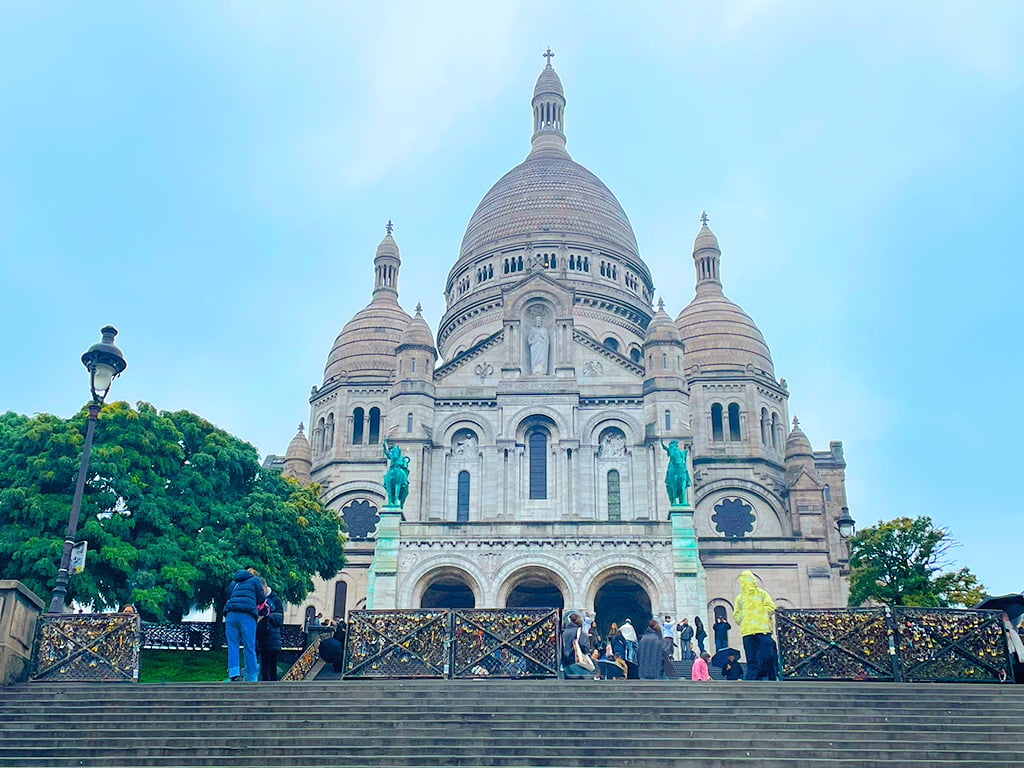
The interior of the basilica is rather bare except for the huge mosaic in the apse depicting the risen Christ with his arms wide open and a golden heart in the centre. A visit to the Basilica’s dome, on the other hand, is absolutely recommended. It is characteristic because part of the climb is outside, allowing you to actually walk on the roof of the Basilica. The effort of the 300 steps is repaid by a 360° view of Paris and its characteristic rooftops, revealing an expanse of tiles, skylights and chimneys that are absolutely characteristic.

A short distance away is the famous Place du Tertre, famous for its bohemian atmosphere, characteristic cafés and bistros with outdoor tables and a place where artists and caricaturists gather to display their paintings. Despite the constant influx of tourists, it retains its charm thanks to the historic buildings and the atmosphere that still pervades the air. Contemplating this ancient corner of Paris continues to be an unmissable experience.
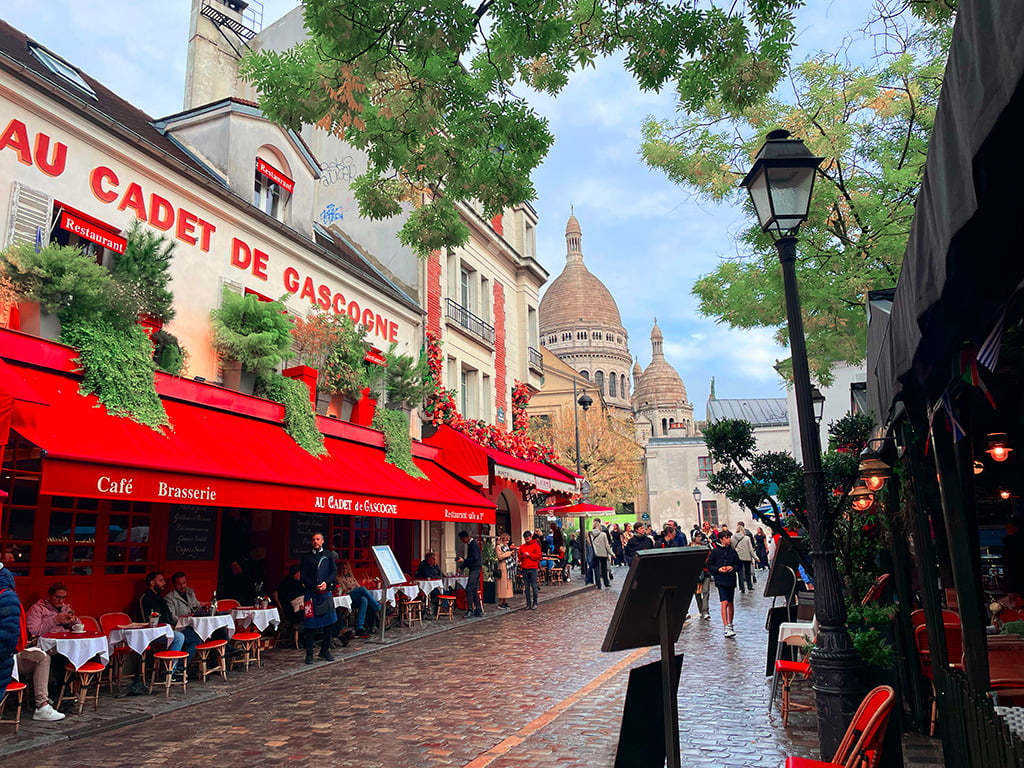
We get lost in the alleyways of the district, stroll around and at every corner cafés, ateliers and windmills tell us the story of this district and its Belle Époque. We pass by Place Dalida where there is a bust dedicated to the famous singer and actress of Italian origin, naturalised French Dalida – Iolanda Cristina Gigliotti – who lived and died in Montmatre.
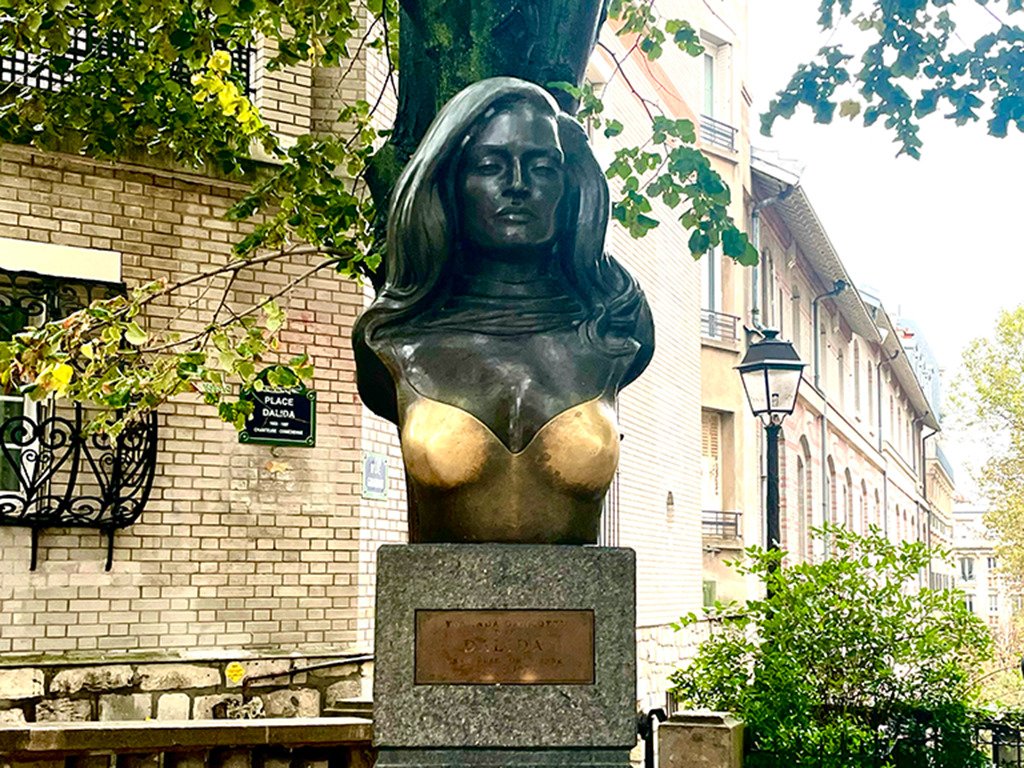
We also cross the Passe-Muraille, a statue of a man who literally walks through a wall and is also the portrait of a character created by the pen of Marcel Aymè, a famous French writer.
‘“Le Passe-muraille” is a 1941 novella that falls into the genre of the fantastic. The protagonist, Dutilleul, possesses the singular power to walk through walls. Having discovered this gift, he uses it to take revenge for the humiliations suffered by his colleagues at work and, later, to commit grand thefts in the biggest banks and jewellery stores in Paris, thus becoming very rich. Once captured, he manages to escape from prison thanks to this power. While planning to escape to Egypt, he falls in love with a married woman with whom he starts a love affair. One night, however, while fleeing from his jealous husband, he loses his power and gets stuck in the wall of the house.‘
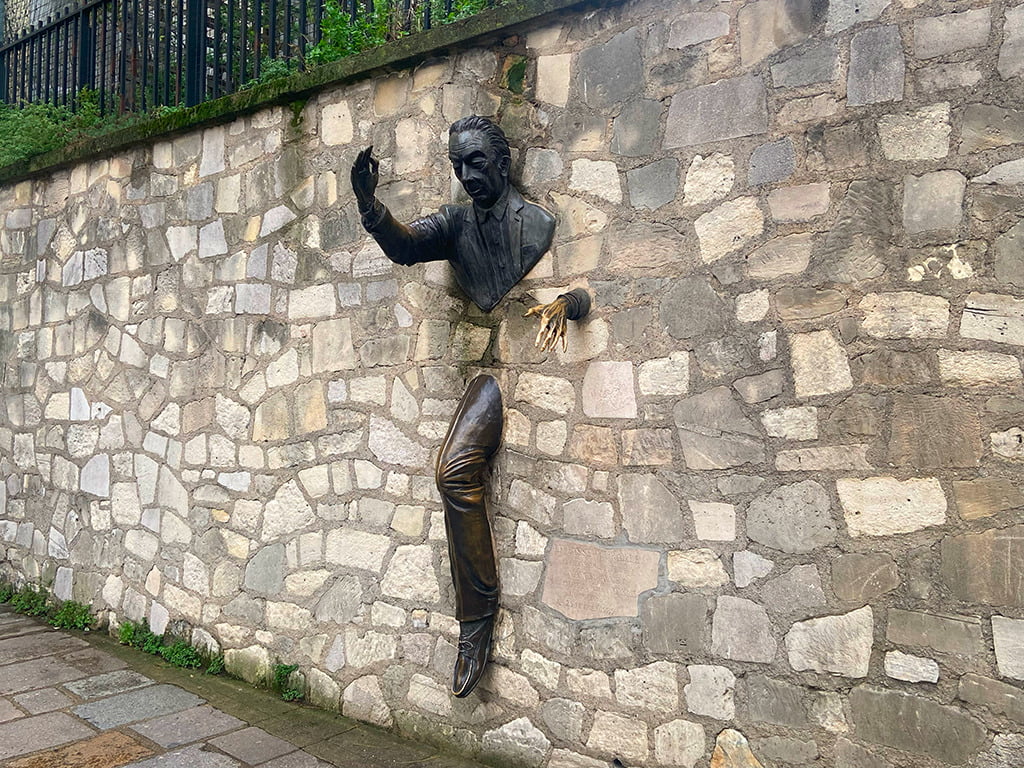
We walk down Rue Lepic a picturesque old street full of cafés, restaurants and a colourful market. At the top of the street are the last two mills of Montmatre – the Blute-Fin and the Radet – enclosed in the famous Moulin de la Galette restaurant, immortalised by Renoir in 1876 in Bal au Moulin de la Galette. Moreover, the street became famous thanks to the famous film The Fabulous World of Amélie, which immortalised the more naïve side of this district, also made up of eccentricity and originality. That’s why we don’t miss a stop at Café des 2 Moulins, rue Lepic 15, a typical café furnished in wood and with a family atmosphere: Amélie Poulain worked here in the famous film.
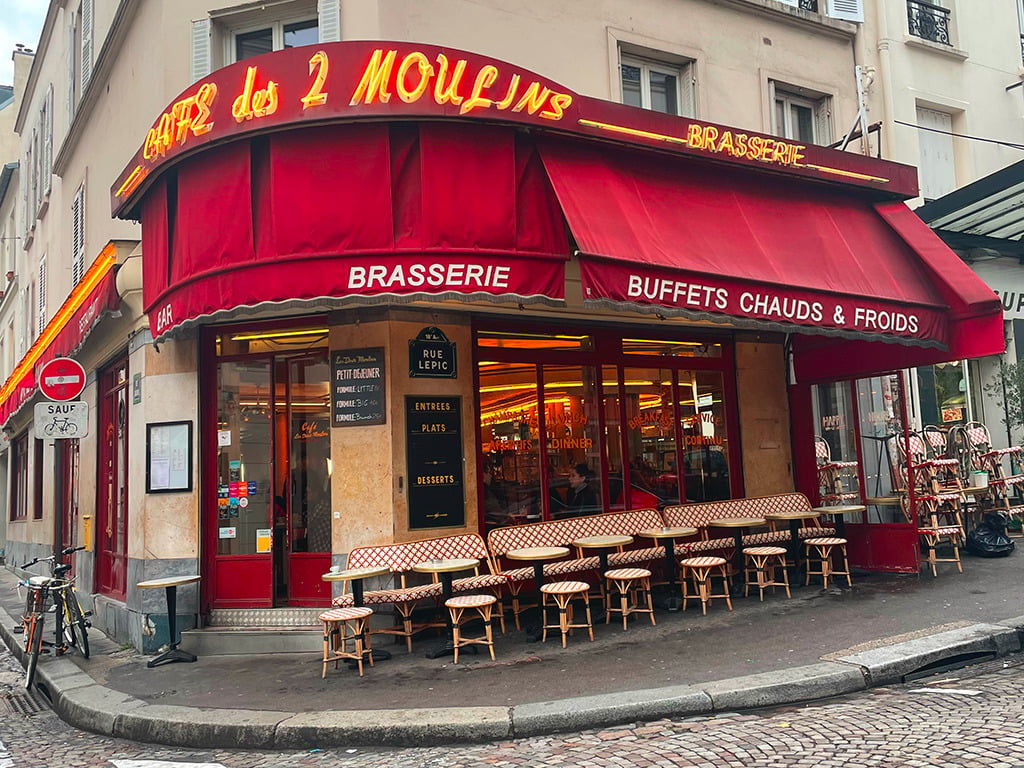
We end our tour in front of the iconic Moulin Rouge in Pigalle, which has become world famous as the birthplace of the can-can. The theatre’s first venue, destroyed by fire in 1915, was co-founded in 1889 by Charles Zidler and Joseph Oller. Rebuilt near Montmartre in the Pigalle district, along Boulevard de Clichy, the venue became famous for its distinctive red windmill on the roof, hence its name. Today, while still operating as a club, the Moulin Rouge is primarily a tourist destination offering music and dance performances for visitors from all over the world. The interior still retains a typically French style from the late 19th century.

Day 3: Île de la Cité, City Centre
We begin our day on Île de la Cité, an island steeped in history and charm that is the real beating heart of Paris.
Our first stop is perhaps little known but full of meaning. The Mémorial des Martyrs de la Déportation is a touching monument dedicated to the victims of the Second World War, particularly the deported Jews. Through its rooms, made up of high concrete walls, and the respectful silence that surrounds it, the memorial immerses us in a profound reflection on the tragedy of the past.

We go on to discover a Gothic masterpiece: the Cathédrale Notre-Dame de Paris. Unfortunately, we find it still under renovation, but even through the scaffolding and cranes we glimpse the intricate details of its spires and sculptures that transport us back in time.
The next stop takes us to the Sainte-Chapelle, a hidden gem. The queue is really long, we manage to get our tickets online and after just over an hour we are inside. Upon entering the chapel, we are surprised by an unexpected spectacle of light and colour: the magnificent stained glass windows tell biblical stories with a chromatic richness that leaves us breathless. The atmosphere here is enveloped in a feeling of sacredness and beauty. Despite the long wait and the short visit, it is absolutely worth it!

Before leaving theÎle we stop at my absolute favourite spot in Paris: the atmospheric Square du Vert Galant – I spent entire August afternoons lying here dreaming of a life in Paris – . This garden offers not only a breathtaking view of the Seine River but also a cosy and intimate atmosphere that feels like home.
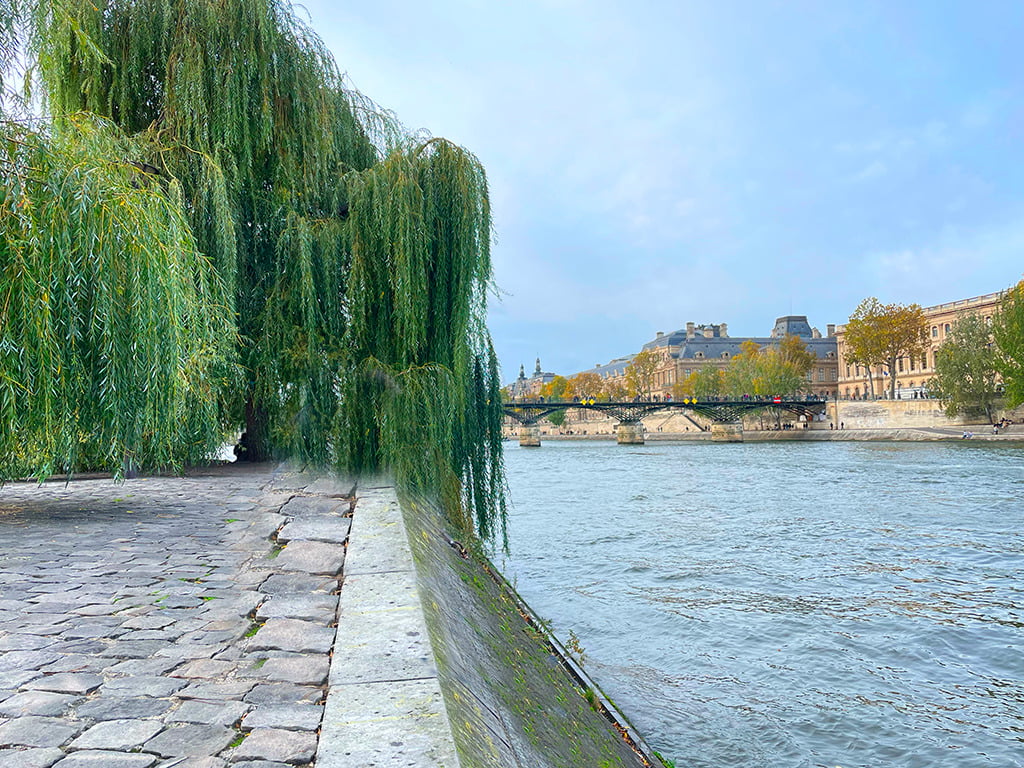
We cross Pont Neuf, the oldest bridge in Paris, and discover the spectacular views that unfold as we cross the bridge.
We then move to the centre of Paris, an area rich in art and culture. We reach the famous Louvre Pyramid, where the contrast between ancient and modern is very strong. Its contemporary lines next to the historical Louvre create a continuity of culture and art throughout the centuries. The museum courtyard is a very fascinating space and we stop here for the moment, we will dedicate another day to visiting the Louvre.
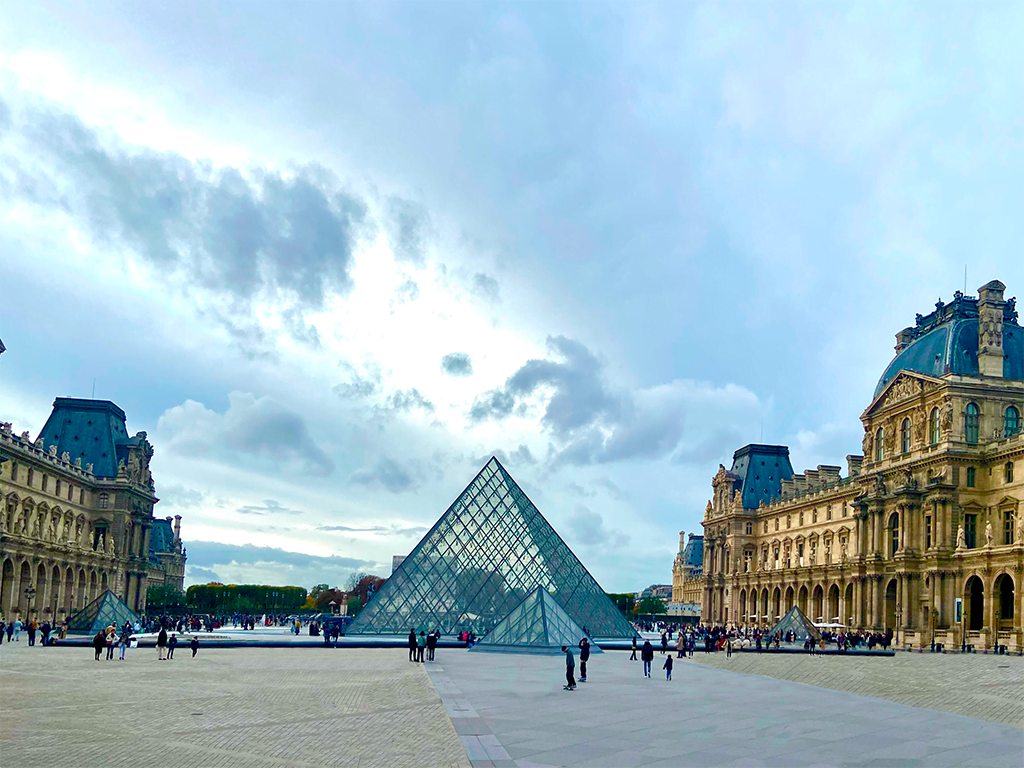
We pass through the Jardin du Carrousel, an elegant garden of mature trees and fountains. We continue to the Jardin des Tuileries, an Italian-style garden where, amid shady avenues and classical statues, we immerse ourselves in an atmosphere of grace and beauty. Colourful flowerbeds and water features add a touch of liveliness to this enchanting place. We arrive at the sumptuous Place de la Concorde. The Egyptian obelisk in the centre, the Fountain of the Seas and the imposing buildings surrounding the square take us back to the time of the French Revolution. We pause to contemplate the grandeur of this space, rich in history and symbolism.
We walk down the elegant Champs Élysées, one of the most famous streets in the world. Here, among the luxury boutiques and trendy cafés, we breathe in the glamorous atmosphere of this street but we go straight ahead and don’t even enter a shop, we are not the shopping type. We then arrive at theArc de Triomphe, an imposing icon that dominates the Champs Élysées perspective. The majestic architecture of this monument commemorates the victories of the French army and reminds us of national pride.

We take the metro and head to the Trocadéro, a panoramic balcony offering an exceptional view of the Eiffel Tower, the undisputed symbol of Paris. Here, we stop to contemplate the magical effect of twilight on the city of Paris, with the illuminated Eiffel Tower as a spectacular backdrop, and wait until the stroke of 6pm for the tower to start shining.
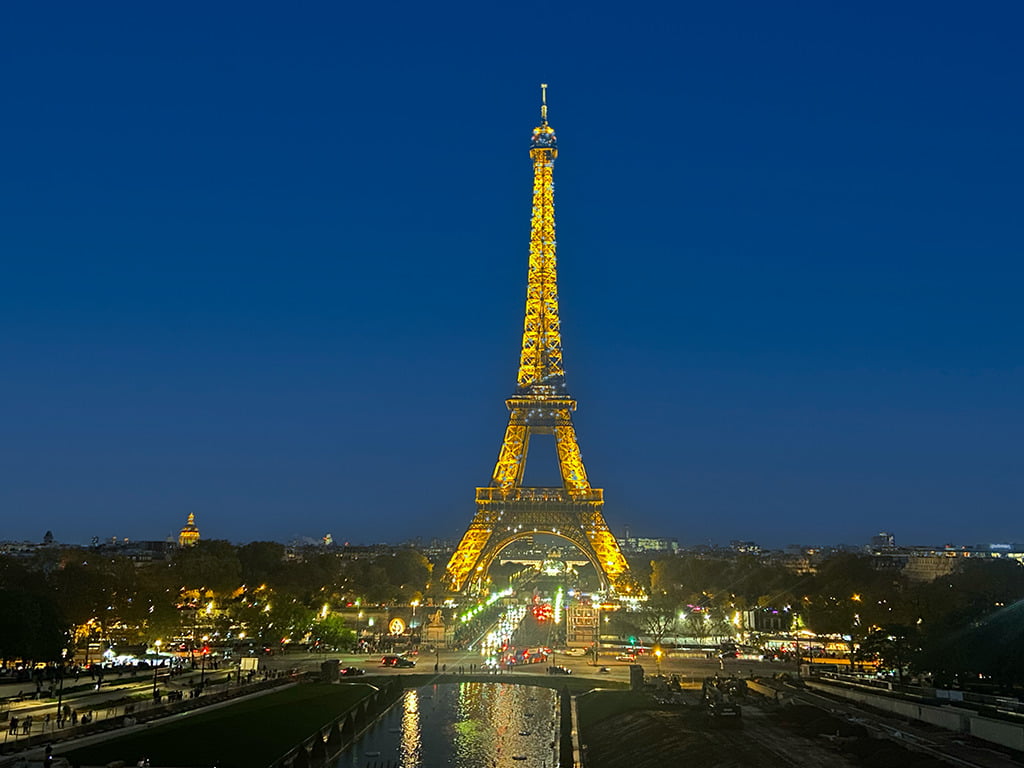
Although it is considered by many to be a tourist trap, I do not pass up a visit to the top of the Eiffel Tower. We board a lift that quickly transports us through the levels of the tower and the glass walls give us a foretaste of the magnificent panoramic view that awaits us. Once we reach the observation platform, we find ourselves at a height of 276 metres, with a breathtaking view of Paris stretching out below us. From here, we can admire the Seine meandering through the city and all the iconic monuments. The perspective from above gives us a unique view of the architectural layout of Paris, with its distinct neighbourhoods and the rooftops of the elegant structures that make up the city.
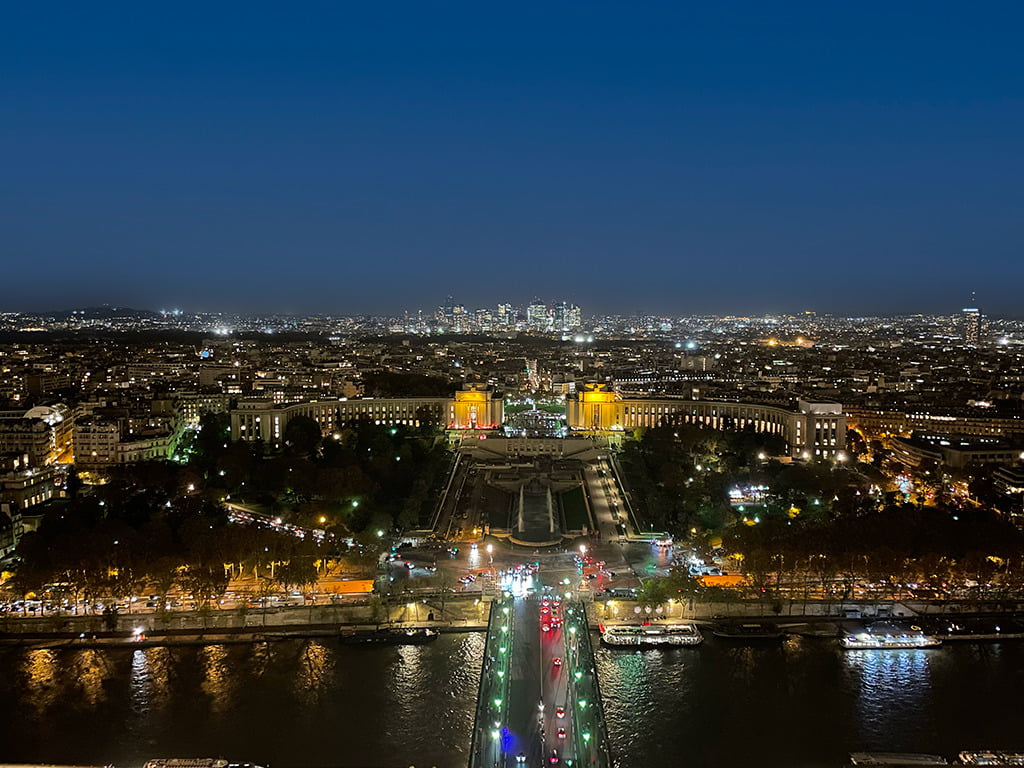
We end the day with a Seine Cruise, when the lights of Paris begin to shine and the river turns into a mirror of water, to enjoy Paris from a different perspective. The lights of the monuments along are reflected in the Seine and one after the other, giving us a spectacular view. We cross the city’s famous bridges one by one, admiring their illuminated elegance and being lulled by the gentle movement of the ship.
Day 4: Versailles, Orsay Museum
Waking up very early, we move just outside Paris for a visit to the enchanting Palace of Versailles.
TipsforTrips: The fastest and most practical way to get to Versailles from Paris is by RER train line C, the yellow line. All you have to do is take one of the many trains that leave to reach the station of Versailles Château Rive Gauche or Versailles-Chantiers. Once at your destination, just walk for about 15 minutes following the signs leading to the royal residence. The RER trains are very frequent on weekdays and weekends. The journey takes about 40 minutes.
The Palace of Versailles, located about 20 kilometres west of Paris, is an icon of architectural grandeur and splendour. Built in the 17th century during the reign of Louis XIV, this sumptuous palace was the centre of power and magnificence of the French monarchy. The sumptuous royal residence has been extended over the years, becoming a symbol of opulence and sophistication.
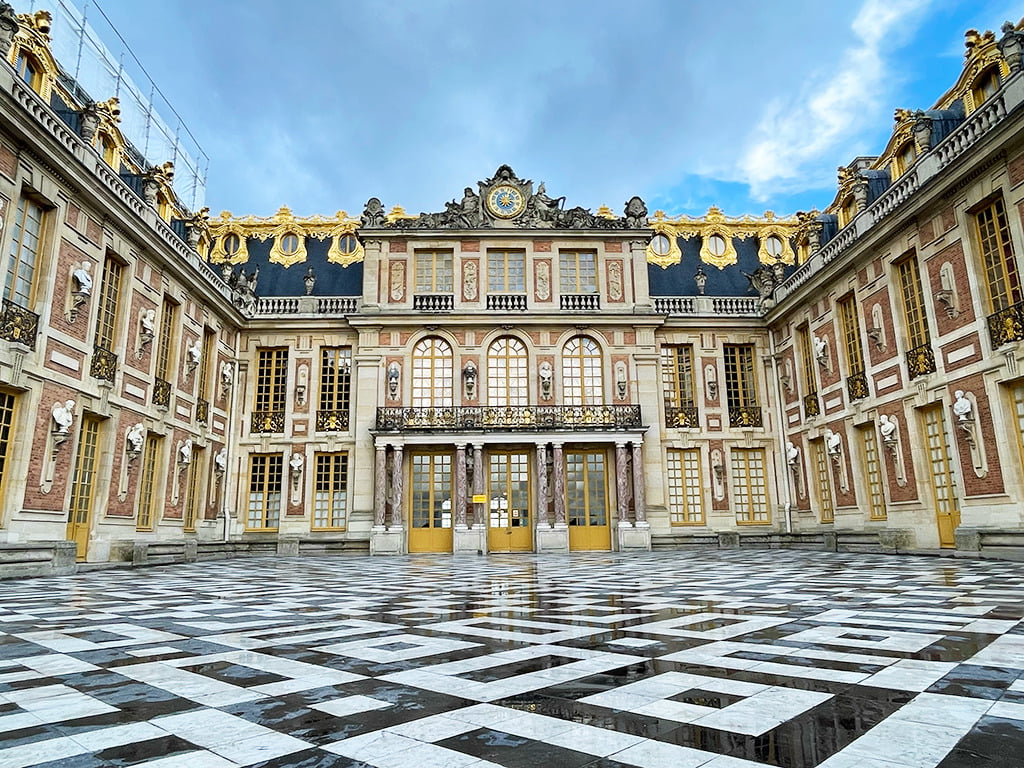
The Palace of Versailles captivates visitors with its majestic architecture and sumptuous decorations. The famous Hall of Mirrors, a masterpiece of architecture and design, is one of the palace’s main attractions. With its huge mirrors and frescoes, this room offers a unique perspective on court life in the 17th century.
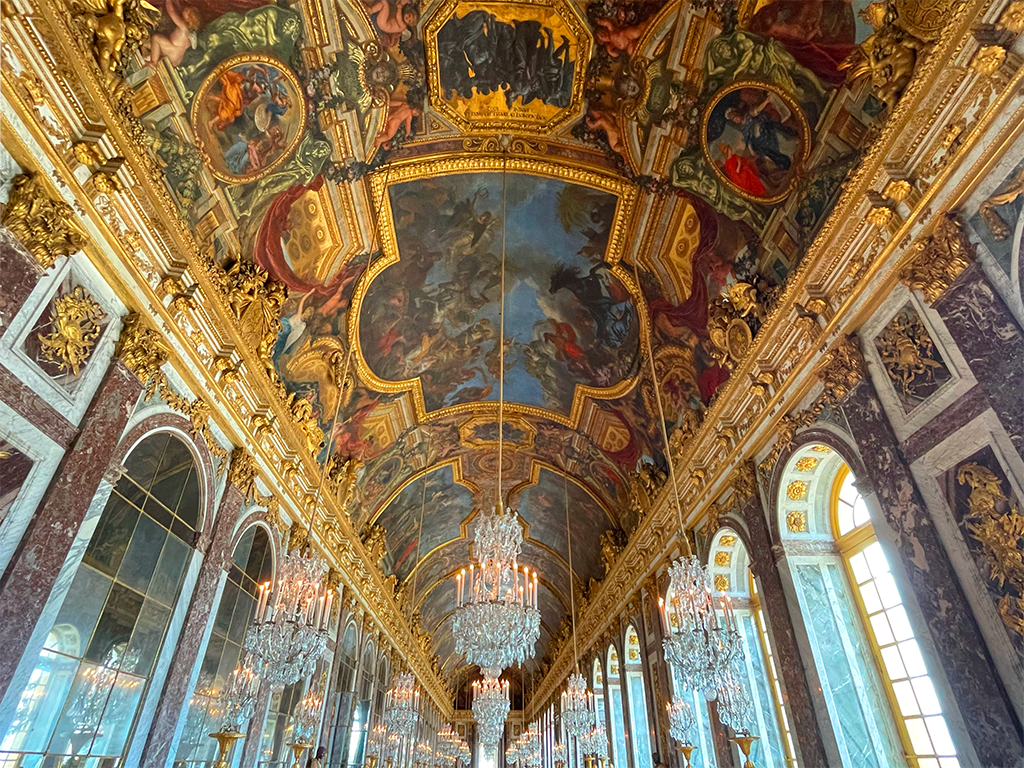
The royal flats are another must-see, with their sumptuous decorations, period furniture and extraordinary works of art. Visitors can immerse themselves in the daily life of the court, discovering the private rooms of the sovereigns and aristocrats.
The gardens of Versailles are a true green paradise stretching for miles behind the palace. Designed by André Le Nôtre, the gardens offer a perfect fusion of art, architecture and nature. The geometric order of the plots, ornate fountains and Baroque sculptures create an ambience of timeless beauty.
We return to Paris, again by the RER C, which leaves us right in front of the Musée d’Orsay, to which we devote the rest of the day.
The Musée d’Orsay is an architectural gem located on the rive gauche of the Seine, with a breathtaking view over the city of Paris. This museum houses masterpieces from the mid-19th to early 20th century, exploring the transition from academic art to the revolutionary expressions of Impressionism and Post-Impressionism. This museum is a Parisian institution set in an old railway station that turns art into an extraordinary experience. This museum is the ideal destination for anyone wishing to immerse themselves in the eclectic world of Impressionist and Post-Impressionist art.
TipsforTrips: If possible, visit the museum in the evening on Thursdays, when the twilight adds a magical touch to the atmosphere.
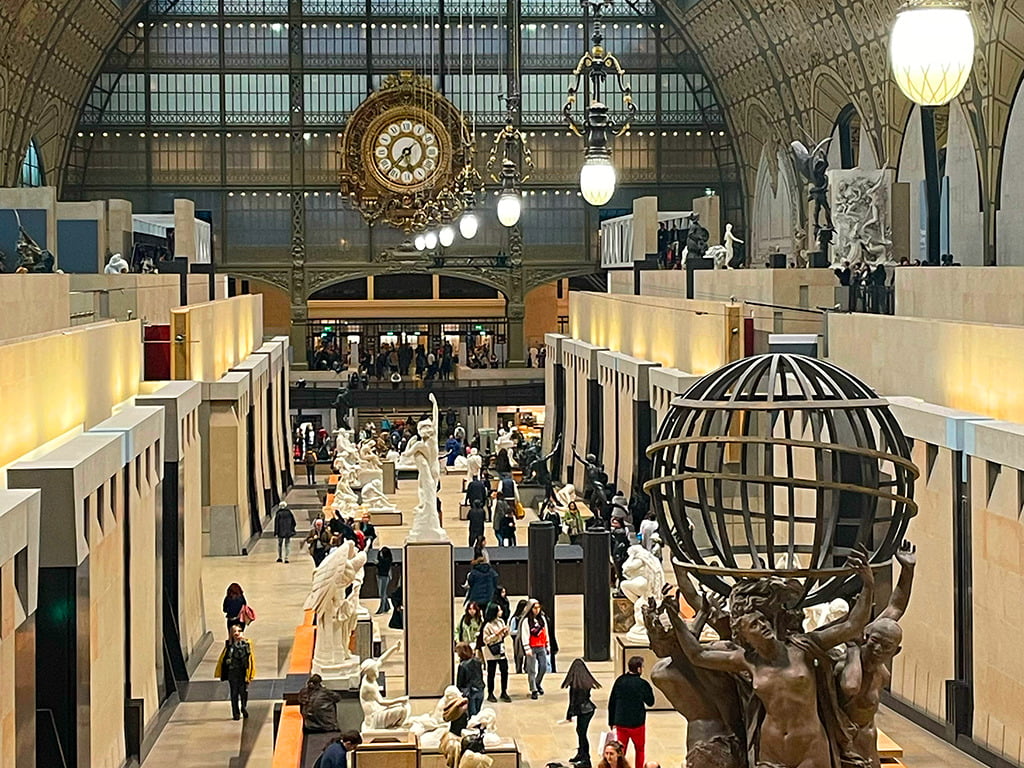
Day 5: Louvre
We dedicate the last day to the magnificent Louvre.
The Louvre is the cultural heart of Paris, where art and history converge in a magnificent union. This iconic museum, located on the banks of the Seine, is a must-see for art lovers and those wishing to immerse themselves in France’s enchanting past. Originally a former royal palace, it has become one of the largest and most famous museums in the world. With over 35,000 works of art spread over eight departments, the Louvre spans centuries of human creativity. From the masterpieces of classical antiquity to the majestic works of the Renaissance, every step through its halls is a journey through time and beauty.
TipsforTrips: Exploring the Louvre requires time and commitment, so to make the most of all the masterpieces it has to offer, plan your “route” in advance: take a look at the museum’s map and identify the works or collections that interest you most to maximise your visit. Also to enrich your experience, consider purchasing an audio guide available in several languages.

Our trip to Paris ends here. There was no marriage proposal on top of the Eiffel Tower, but what can you do, evidently we will have to book another trip.
Last modified: 12 April 2025
